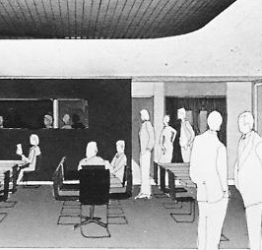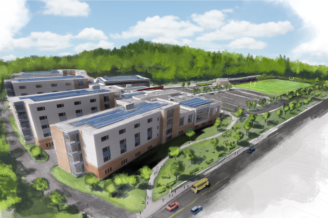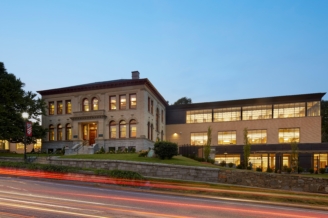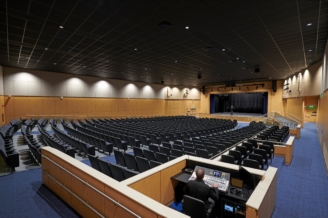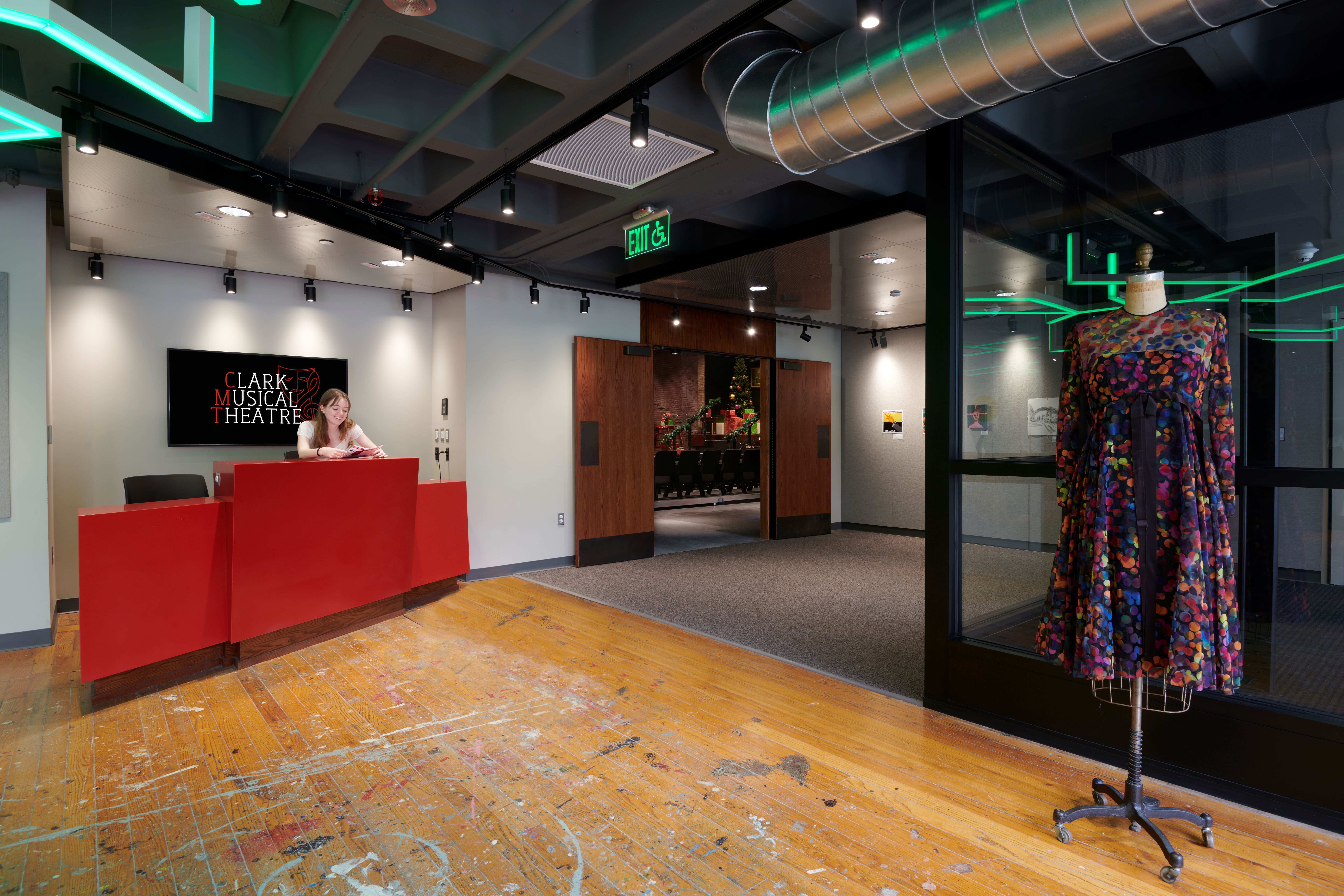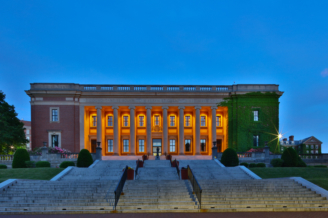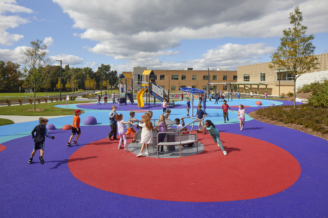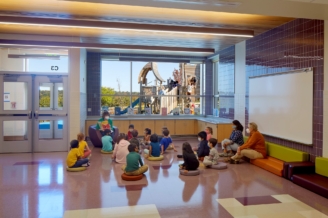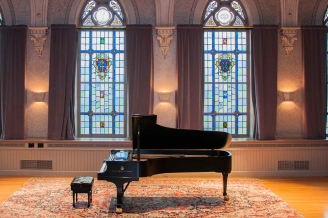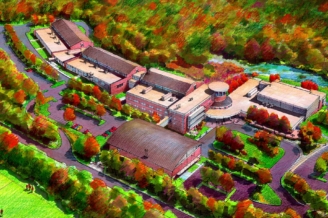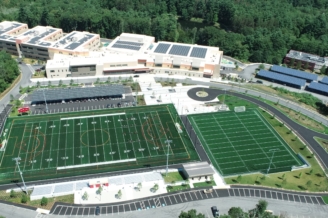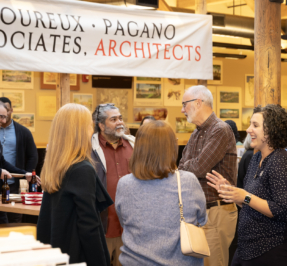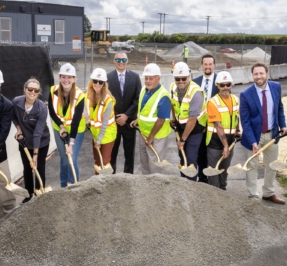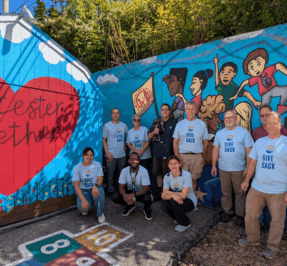Technology through the Years
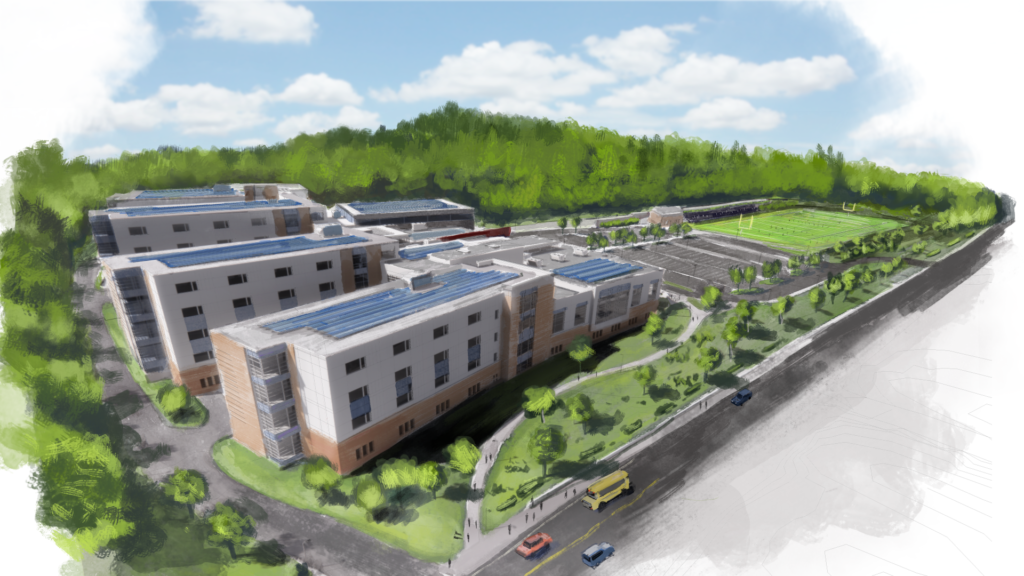
Rendering of Doherty Memorial High School slated for completion in 2024
Communication has never been easier, with distance no longer an obstacle and the time needed to move words and images from place to place dropping to nearly nothing. As LPA|A naturally looks back in celebration of the firm’s 50th year in business, the contrast in how the daily tasks of an architectural firm were done in 1970 to now is striking.
This moment in history where remote work has suddenly become ubiquitous is an interesting time to consider the technological and collaborative tools that are now at our disposal and the journey that got the firm to this point.
When Dick Lamoureux started the firm, the tools of the architect did not include a personal computer, never mind the software that enables virtual walk-throughs of projects while still in the design phase.
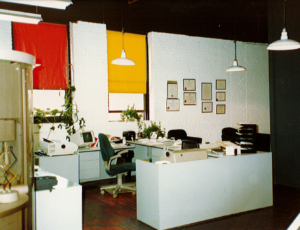
The first computer in the office in the 1980’s
Many current staff at the firm still remember drawings done by hand, using Mylar architectural film, or typing specifications on a typewriter, where one too many typos would mean throwing the work away and restarting the page. Placing an ad or printing a proposal meant cutting images and text (with scissors) and literally pasting it together, then mailing or hand delivering to the print shop. Physical models built and then shared in person was often the best way to help clients imagine what their final buildings would ultimately look like from all angles.
It would not be until the 1990s when the office would acquire its first personal computer with computer-aided design software. The new technology needed to be implemented and learned over time, leveraging the interest and acumen of the more tech-savvy members of the team. The transition from one or two computer stations to one device per staff member took a few years.
This change from hand-drawn designs to computer-aided design changed the entire field in many ways and has certainly altered the nature of the job of architecture. Collaborative tools, the ability to share files to multiple users simultaneously, and the ability to work virtually anywhere, developed over the last quarter century, have helped to quicken the pace at which projects can get done, and have allowed for an even more iterative process as ideas can be tested and adjusted within the software relatively quickly.
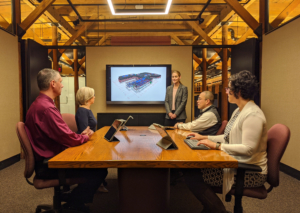
LPA|A conference room as it looks now
In the past few years, the technology that allows for virtual reality tours of projects has been changing and improving as well, and LPA|A has been exploring and investing in that technology. It has proven incredibly helpful for everyone involved in the design process, but especially clients and future building occupants, to experience the design at various stages of the process.
Obviously, no technology that exists today could truly improve upon the face-to-face meeting or take the place of the spontaneous conversations that lead to new ideas in a collaborative office environment, but being able to connect and share ideas across any distance and in real time, has proven to be invaluable for us all.
Categorized In: Articles, News
Tagged In: Technology, Worcester
Share This



